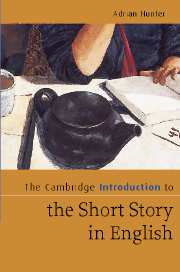Book contents
- Frontmatter
- Contents
- Acknowledgements
- Introduction
- Part I The nineteenth century
- Part II The modernist short story
- Introduction: ‘complete with missing parts’
- Chapter 4 James Joyce
- Chapter 5 Virginia Woolf
- Chapter 6 Katherine Mansfield
- Chapter 7 Samuel Beckett
- Part III Post-modernist stories
- Part IV Postcolonial and other stories
- Notes
- Guide to further reading
- Index
- Titles in this series:
Chapter 5 - Virginia Woolf
Published online by Cambridge University Press: 05 June 2012
- Frontmatter
- Contents
- Acknowledgements
- Introduction
- Part I The nineteenth century
- Part II The modernist short story
- Introduction: ‘complete with missing parts’
- Chapter 4 James Joyce
- Chapter 5 Virginia Woolf
- Chapter 6 Katherine Mansfield
- Chapter 7 Samuel Beckett
- Part III Post-modernist stories
- Part IV Postcolonial and other stories
- Notes
- Guide to further reading
- Index
- Titles in this series:
Summary
In a widely cited essay, Mary Louise Pratt argues that the relationship between the short story and the novel is not one of ‘contrasting equivalents’, but is ‘hierarchical’, ‘with the novel on top and the short story dependent’. Pratt offers both conceptual and historical justifications for this claim. The conceptual case is that ‘shortness cannot be an intrinsic property of anything, but occurs only relative to something else’. In other words, the short story is ‘short’ only by comparison to the novel. The historical argument is that the novel has prevailed because it is self-evidently ‘the more powerful and prestigious of the two genres’, with the short story functioning as a ‘training or practice ground for the apprentice novelist’. The attempts by theorists stretching back to Brander Matthews in the 1890s to identify the unique properties of the short form ought now, Pratt contends, to give way to a recognition of the ‘dependent (rather than interdependent) relation between short story and novel’.
Pratt's thesis would appear to be borne out in the careers of many twentieth-century writers for whom, as John Barth describes, a ‘pattern of working in the short story, building a reputation, and advancing to the novel’ has prevailed. What is more, the publishing industry has continued to treat the short story as a low-capital testing ground for talent that will find its full expression in longer work.
- Type
- Chapter
- Information
- The Cambridge Introduction to the Short Story in English , pp. 62 - 71Publisher: Cambridge University PressPrint publication year: 2007
- 1
- Cited by

